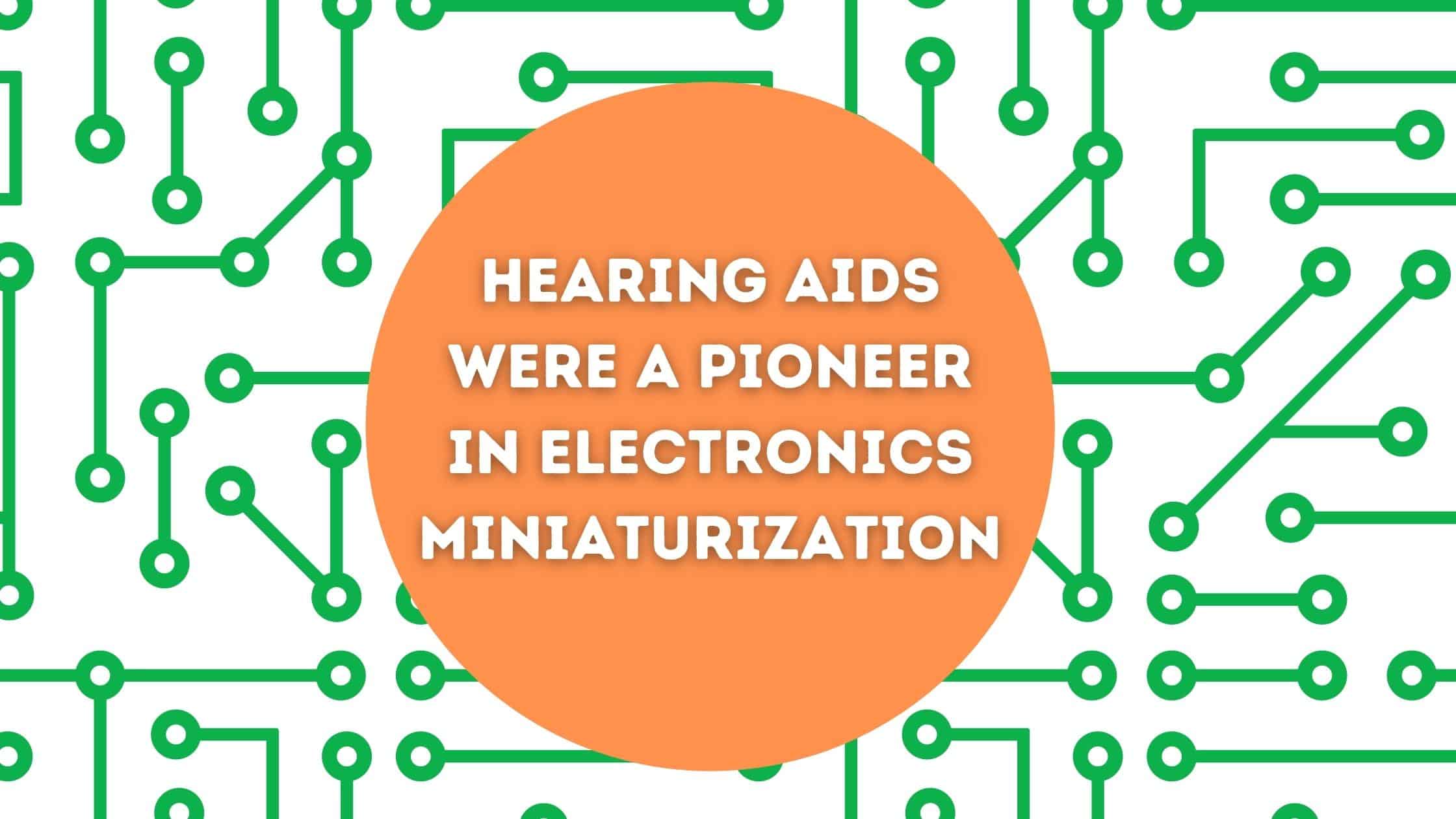
What we see today in miniature electronics is a relatively recent development. Only a few decades ago, it was unheard of to consider that computing power could be held in the palm of your hand. Today, almost everyone has a smartphone in their pocket with power that far exceeds that of the best computers from that era. How did electronics designers and manufacturers come up with this remarkable technology?
Those enormous computers that filled entire rooms from the bygone era required massive amounts of space, and the process of minimizing the size of electronics had to borrow from other domains to make contemporary computing possible. It turns out that hearing aid developers were the avant-garde of electronics miniaturization! Though portability wasn’t an option for many other devices at the time, hearing aids had to shrink in size to fit within the outer ear, and they required battery power at a time when other electronics were not always powered by such small energy cells. Let’s look back to some crucial moments in the history of hearing aids that made small electronics possible today.
Hearing Aids Prior to Miniaturization
Sound scholar Mara Mills at New York University is a historian of amplification technology. In her in-depth history of hearing assistive technology, she uncovers some crucial moments in development of miniature technology, making possible other subsequent tiny electronics. Prior to WWII, electronics were too big to be worn in the outer ear. Hearing trumpets were used as crude devices to amplify sound, but they were large and conspicuous devices. Mills points out that the stigmatization of hearing loss led to a desire for tiny devices that would be less obvious to the eye. This consumer demand for small hearing devices took advantage of a new technology: the transistor.
Transistors and Miniatures
Electronics were reliant on high-voltage circuits to operate prior to the invention of the transistor. Before that innovation, they were only able to output as much voltage as they received on input. However, in 1947 John Bardeen and Walter Brattain at AT&T’s Bell Labs in Murray Hill, New Jersey experimented with conductors that would make it possible to produce an output voltage that was greater than the input voltage. Physicist William Shockley saw potential in this technology and considered if it would be possible to develop “transresistance,” in effect amplifying voltage rather than limiting it. Indeed, this process became known as the transistor, and it paved the way for the possibility of amplification in the small unit of the hearing aid. With the ability to take a small amount of voltage and to transform it into a more powerful signal, the hearing aid became possible in the miniature size we know today.
Compact Assembly and the Integrated Circuit
Although the transistor made possible the idea of the hearing aid, it took some time before the entire assembly of microphone, receiver, and speaker were compact enough to fit into the outer ear, let alone the tiny devices we have today that fit entirely out of sight in the ear canal. Deaf and hearing-impaired communities played a large part in this development of compact assembly, particularly when they were faced with discrimination and judgment from the hearing world.
This compact assembly required the integrated circuit, a technology that first appeared in hearing aids but is widely used today. Developed from 1959 through the 1970s, this microprocessor makes it possible to not only use a transistor as an on/off switch but to actually manipulate sound in some of the ways we witness today. While it is true that we see many other manifestations of these technologies today, including tiny electronics that were unimaginable prior to WWII, Mills emphasizes that the hearing aid remains a clear example of the desire for miniaturization in other domains.
When we see other technologies that include complex computing and processing housed in tiny devices, we have hearing aid innovators to thank for those developments. If you are one of the many people who desire an invisible hearing aid small enough to fit completely inside the ear canal, contact us to find out if this style of hearing assistance is suited to your needs!
